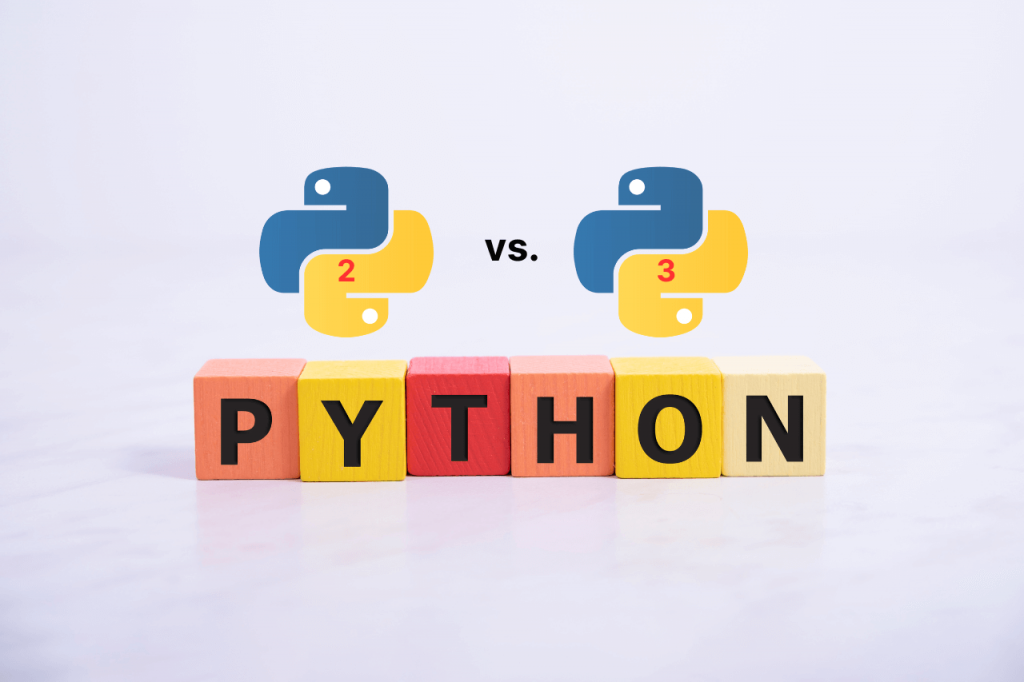Python, one of the most popular programming languages, has evolved over time, with two major versions that have shaped its landscape: Python 2 and Python 3.
While Python 2 had a long reign, Python 3 introduced significant improvements and became the preferred choice for developers. In this article, we will delve into the differences between Python 2 and Python 3, highlighting why Python 3 is considered a superior choice.
You’re reading the article, Major Differences between Python 2 and Python 3.
Python 2: A Legacy to Remember
Python 2 was initially released in the year 2000 and served as the backbone for numerous projects. Many developers and organizations built their systems and applications using Python 2, resulting in an extensive codebase. However, as technology advanced, Python 2 began to show its limitations.
- Print Statement vs. Print Function: In Python 2, the print statement was used without parentheses, while Python 3 introduced the print() function. This seemingly small change made Python 3’s syntax more consistent and enhanced its compatibility with other programming languages.
- Unicode Handling: Python 2 handled strings as a sequence of bytes by default, causing complications when working with Unicode characters. In Python 3, strings are Unicode by default, eliminating many encoding and decoding issues.
- Division Operator: The division operator in Python 2 used integer division by default, which returned an integer result. Python 3 rectified this by making the division operator return a float, enhancing precision and avoiding unexpected results.
- Iteration and Looping: Python 3 made changes to its iteration and looping constructs, resulting in a more efficient and Pythonic code. The xrange() function in Python 2 was replaced with range() in Python 3, making it a generator rather than creating a list in memory.
You’re reading the article, Major Differences between Python 2 and Python 3.
Python 3: Embracing the Future
- Enhanced Performance: Python 3 introduced several performance improvements, making it faster and more efficient than its predecessor. Python 3.7 and later versions further optimized the language, delivering better overall performance.
- Improved Syntax and Features: Python 3 introduced new syntax features, including better exception handling, function annotations, and asynchronous programming capabilities. These enhancements allow developers to write cleaner, more maintainable code.
- String Handling: Python 3 revamped string handling by introducing Unicode support and string interpolation. The f-string feature, for instance, allows developers to embed expressions directly within strings, enhancing readability and simplifying code.
- Library Support: As Python 3 gained traction, library maintainers shifted their focus to Python 3 compatibility. Consequently, many new and updated libraries are only compatible with Python 3, offering developers access to the latest features and improvements.
You’re reading the article, Major Differences between Python 2 and Python 3.
Python 2 and Python 3: Comparison
Python 3, with its numerous improvements and enhancements, is undoubtedly the superior choice. Although Python 2 enjoyed a long reign, the Python Software Foundation officially discontinued its support in 2020. This discontinuation means that Python 2 no longer receives security updates or bug fixes, making it a less secure and potentially risky option for development projects.
Moreover, the thriving Python community has fully embraced Python 3, making it the standard for future development. The majority of new tutorials, books, and online resources are centered around Python 3, ensuring developers have access to the latest knowledge and best practices.
You’re reading the article, Major Differences between Python 2 and Python 3.
In Conclusion
Python 3 is the evolution of Python, addressing the limitations and challenges faced by Python 2. With improved syntax, better performance, enhanced library support, and an array of new features, Python 3 provides developers with a modern and powerful programming environment. As Python 2 fades into history, embracing Python 3 is essential for staying current and leveraging the full potential of this remarkable language.
So, if you’re starting a new project or considering migrating an existing one, Python 3 is undoubtedly the way to go. Don’t let the past hold you back; embrace the future with Python 3!
Sources:
- Python.org – Official Python Website
- Real Python – Python 3 Tutorial
- Stack Overflow – Python Questions and Answers
Hope you liked reading the article, Major Differences between Python 2 and Python 3. Please share your thoughts in the comments section below.

